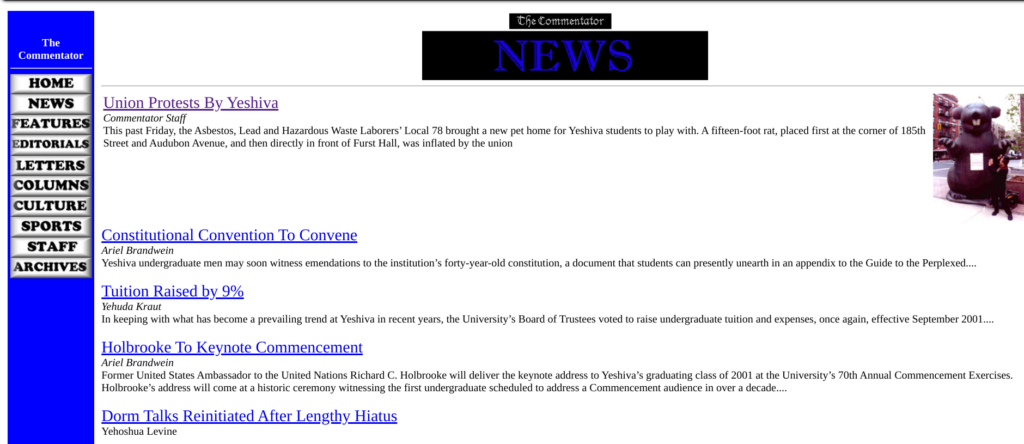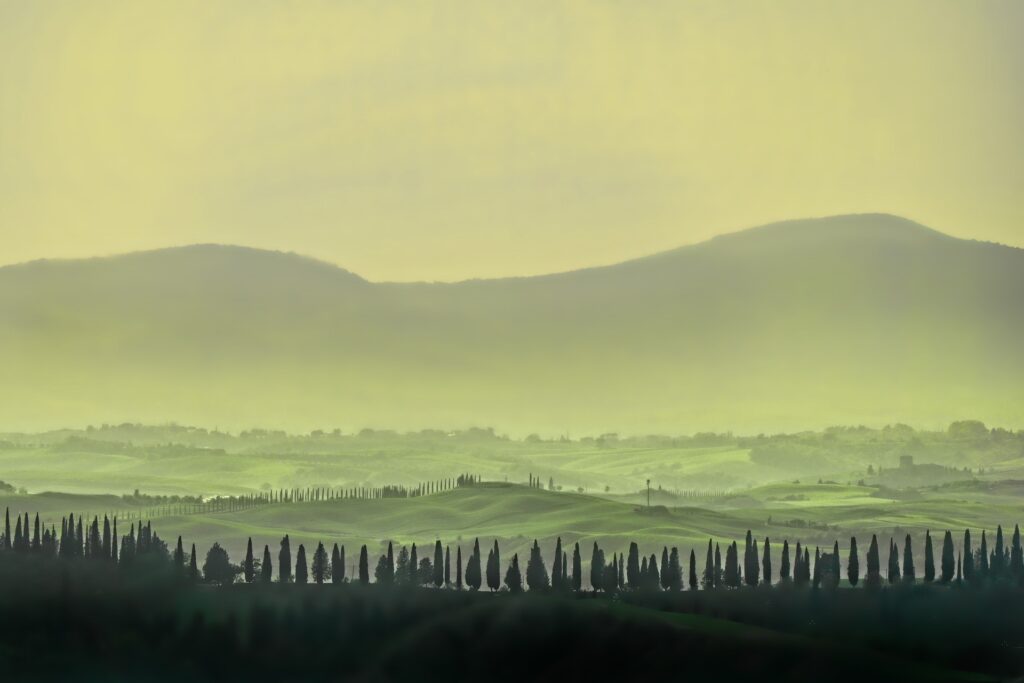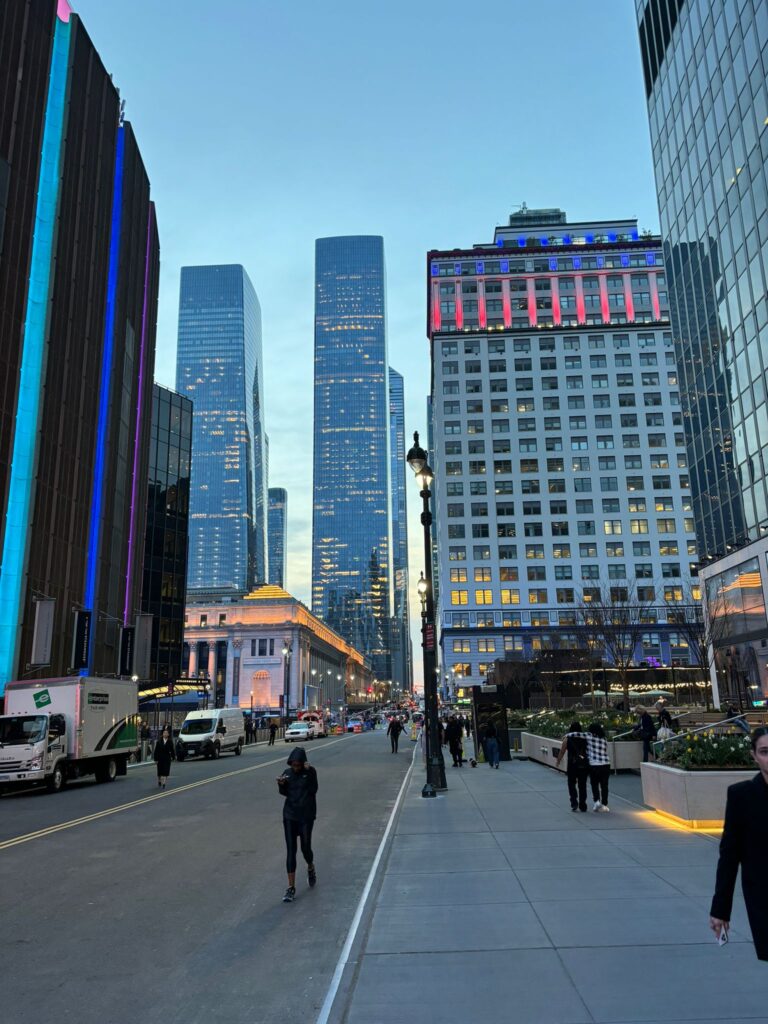
Navigating the Floors of the Gottesman Library
Warning: this article bases its descriptions of the fifth floor of the Wilf library on its BC (Before [re]Construction) days. Be advised.
During a student’s tenure at YU, life will be molded through a fine academic education and an impactful spiritual experience. But tiring effort will prove necessary. He will pore over textbooks, tap endlessly at his keyboard for final First Year Writing essays, and gulp down sushi-salad lunches swiftly so as to not arrive tardily to class. But if you are a Yeshiva University student, no location will be as useful to you as Wilf campus’s premiere Gottesman-Pollack Library. Or Pollack-Gottesman Library. Or perhaps it strictly carries the Gottesman name? No one truly knows.
YU’s library is prime location for animated study groups, focused tutoring sessions, Netflix-binging, or solitary learning. It is where you will find many of your fellow students taking care of their young-adult duties throughout the semester. You will greet its pen-marked desks, embrace its deafening air-conditioning, and marry its one-height-does-not-fit-all swivel chairs.
Studying in the library leads to a tough choice: on which floor to unpack your books. The library has five floors, with a few subfloors in between, and each harbors its own distinct characteristics that will aid in your choice of study location. To master the library, you must develop expertise in knowledge of what floor optimizes each type of work. Thus, we will climb the steep terrain of the library floor-by-floor, analyzing each according to its unique flavor. I recommend bringing sturdy hiking boots.
A relaxed atmosphere pervades the second floor. There are tables interspersed between rows of computers meant for small study groups or similar joint activities. On this floor, people copy missed notes, debate politics, and plan NCSY shabbatonim while sharing a late-afternoon snack. If you see an index-card sized note that reads “No Food Zone,” feel free to use it as a napkin. The library provides many useful resources.
The back of the floor acts similar to a lounge, with neon green, orange, yellow chairs on which to stretch or take a power nap. Natural light from floor-to-ceiling windows illuminates the area to release your endorphins and provide religious inspiration. YU is a yeshiva, after all. The sprawling windows overlook the historic Morgenstern dormitory for upperclassmen and, more importantly, the Stern shuttle bus stop. Feel free to creepily peer out the window in the evenings to see which Beren campus students have decided to spend time in on Amsterdam Avenue. I have been told that if you make eye-contact with one, winking will secure a first date.
The last major use for the second floor is printing. In YU, the Office of Student Life wishes to make every moment of your college experience as enjoyable as possible, so they have created a game where you must hopelessly search for the three functioning computers to find one from which to print. But do not be fooled: some turn on but are not connected to the network. Many students will dare to accept the challenge, yet few will succeed.
The second floor’s lack of silence makes it non-conducive to individual study. Considering its label as floor two, we next ascend to 2A. Lining the edges of 2A are personal work stations theoretically perfect for your focused studying. I write “theoretically,” because the unfortunate reality is that it seems the carefree air from the floor beneath somewhat infects this floor as well, and some deem it an adequate spot for passionate phone conversations or casual study-dates. Perhaps save 2A for quick assignments requiring minimal attention.
The stairs take us to floor three, the home of several study rooms that appear to be sound-proof but, if you inquire of anyone in the neighboring area attempting to focus on his textbook, are not. If you join any of YU’s plethora of committees or clubs, you may find yourself meeting in one of these whiteboard adorned rooms to discuss pertinent issues or plan ski trips that probably will never occur. BYOM: Bring Your Own Markers.
Next, we meet floor 3A, which appears similar to 2A in structure and draws fewer distractions. I would recommend it for decently focused work, or, if you can ignore the noise, the slightly more intensive catching up on House of Cards (too soon?).
Our library ascent climaxes at the fourth floor. Before you frantically search the crevices of 3A like a headless chicken or clueless freshman for a main staircase to floor four, beware that no such stairs exist. You must take the auxiliary staircase in one of the corners of the floor or ride the elevator up. You may ask yourself whether logic for such a structural flaw exists, but you should recognize that while Jews frequently find success in many areas, architecture seems to not be one of them.
“Fourth floor quiet study zone.” My mouth salivates upon visualizing the freestanding torso-height sign that greets arrivals to floor four. On this floor, I am home at last. Silence becomes law and nonsense is persecuted. Some describe it as a getaway, that untouched brush between the tall trees far into our backyard we would enter as children and imagine our most exotic adventures. Students sit down at an individual study table and become enraptured by the focused flow of productive achievement. On the fourth floor, stillness allows for synapses in our brain to connect in the complex ways that once discovered the light bulb and conjured the theory of relativity. Walden Pond truly lies in Washington Heights.
The rows of white, outlet-laden desks seemingly sprawl until the world’s end. On the fourth floor, economics majors read through entire textbooks until one in the morning, biology students’ fingers become an unrecognizable blur as they rush to type up their lab reports. During finals season, the area becomes an energized beehive of overly caffeinated college students, and you must arrive at the break of dawn if you wish to secure a seat. For all focused tasks, hone in on the fourth floor, grasp it with a tight fist, and refuse to relinquish its limitless offerings.
Not recently renovated like the other floors, the fifth floor breathes the moldy scent of decaying wood that will infiltrate your senses as soon as you enter. Different from the fourth floor, the fifth floor’s serious atmosphere is limited to Rabbi Simon sitting at the first desk with approximately thirty books opened in front of him. At the back tables, Bnei Akiva aficionados organize “educational” ice-skating trips and practice “Zionist” flash mobs. In other areas, Jewish studies students debate the latest Mosaic articles and critique academic texts. These former Hesder-yeshivaniks dub this “night seder.” Casual chatter is supported on the fifth floor, though, if luck escapes you, you may find yourself the object of the librarian’s once-a-month catharsis of pent-up shushing. Be sure to recognize that if she evicts you from the floor, you merely represent the floor’s collective sins. Your potential reaches no limits on the fifth floor: you can even become a Christ figure.
Staircases on the fifth floor lead to the library’s peak, 5A. There, personal study desks, similar to that of floor four but different in that they are built of the same old wood that reeks throughout the fifth floor, create a productive study area. However, air conditioning rarely ascends 5A’s high altitudes, so I would not recommend working there unless you desire to sweat off a few pounds.
When you begin Yeshiva University, you must capitalize on the many resources at your fingertips to pave a smooth path to success. Allow YU’s library to aid you on your quest and provide you with the perfect floor to accomplish your many ambitions. Be sure to choose wisely.
Oh, and the library carries books, as well.




